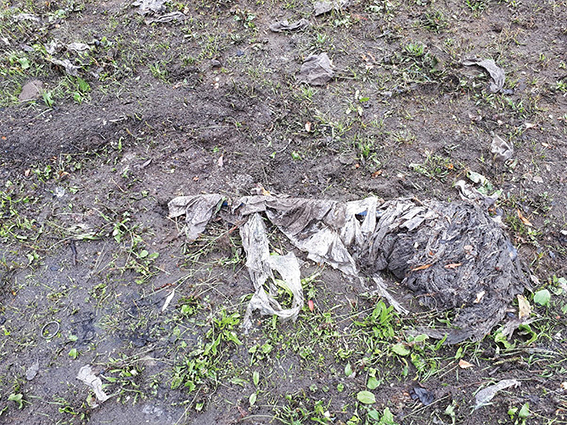The industry at large is very much aware of the operational costs, ecological damage, and public angst over the scourge of sewage-borne litter in the environment. Dr Peter Matthews, C.WEM, CEnv, CChem., FIWO, highlights the urgent need for a more holistic approach to the problem.
The source of the litter may be water borne, but the environmental impacts are much wider. It is time this problem is tackled in a holistic way – and it should definitely be considered by Defra in its Call for Evidence on commonly littered and problematic plastic items, particularly wet wipes.
I’ve written a longer essay on sewage-borne-litter-activity which is being used to underpin submissions to Defra from water sector bodies. The essay acknowledges Defra’s consultations on the proposal that wet wipes should not contain single use plastics. However, this Call for Evidence fails to recognise that not all of the questions raised will be adequately addressed by the one strategy. These questions apply to other criteria which should be addressed in a separate official strategy for all used care products.
In short:
- We need to move away from the mindset of ‘out of sight out of mind’, whether it’s toilet or bin disposal.
- We need to think of the sewers as a transit system for our waste, not simply abdicate responsibility to the authorities, water companies and environmental regulators.
- We need to stop thinking that the water company has to take whatever we throw (or should I say flush) at it, and then blame it when things go wrong. (It would be like applying a philosophy of restrictions on what can be posted in the mail system to protect public safety).
Solving the problem is not just the responsibility of our water companies: they are facilitators. In correlation, we need a set of policies and practices which mirror, but don’t mimic, the controls exercised for trade effluents.
Using a medical analogy, there should be a holistic approach in which the symptom (wet wipe pollution) is not dealt with in isolation, but as a visible part of a condition (lack of integrated management of used care products).
In fact, the approach should be part of a much bigger picture of sustainable water
management, in which all sewage contents are recovered and recycled. A national problem needs a national solution, involving everyone in the process – including bathroom and toilet product suppliers and designers – to facilitate more acceptable approaches to bagging and binning.
So, what could a national strategy for dealing with used care products look like?
- It should be driven by a national consensus group representing a much wider range of interests than the water and woven fabric industries, and must include behavioural scientists.
- The solution must be recognised as not just the water industry’s responsibility. It should no longer be a case of ‘out of sight out of mind’ and controls must be exercised over what goes into the sewerage system.
- Proposed solutions should interface with the strategy for eliminating single use plastics.
- The principle must be based on ease of product use, but still care about the consequences.
- All used care products must be bagged and binned. Designated products must meet standards of degradability and biodegradability. Used products will still be flushed away from time to time so products must meet these standards to minimise problems (also relevant to ultimate disposal of solid waste). This builds on the principles of the Water UK report of 2017 and follows the advocacy of City to Sea.
- Some products will be exempted ‘pro tem’ from the standards because of the lack of alternative material, for example condoms. But the presumption will be that research should be directed at removing products from the exempted list.
- Designated products will be regulated using a recognised system drawing on the experiences of REACH, possibly using a BSI kitemark.
- All products will be labelled very clearly ‘bag and bin’ under the appropriate Regulations to help consumers, but designated products will carry the kitemark.
- Monitoring compliance would probably lie with Trading Standards.
- The strategy will build on the foundations laid by Water UK, but the terms ‘flushability’ and ‘fine to flush’ should be dropped.
- ‘Nudging‘ tactics should be employed to encourage ‘bag and bin’.
- Biodegradable disposal bags should be made readily available, including with the retail products (for example, see fablittlebag.com), or even with water bills. Suppliers should be involved to ensure facilities enable the proper disposal of used care products.
- More needs to be done to encourage good practice in toilet and bathroom facilities outside the home.
- Messaging is very important, for example in national print and social media, on coping with day-to-day issues of environmental change and possibly a Code of Practice.
Hopefully, these suggestions could help inform an integrated Used Care Products Strategy, and act as a ‘straw man’ for debate. It remains to be seen if there is an appetite for implementation.



